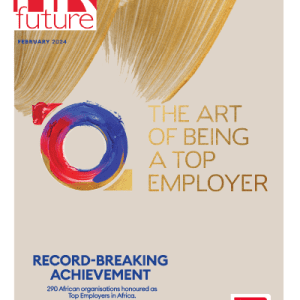A poor employee onboarding process can have detrimental effects on the new hires, which can cost the organisation some money. If your onboarding process is a failure, it can leave new hires frustrated, confused, and disengaged, resulting in higher attrition rates and decreased productivity. New employees can struggle to acclimate to their roles and the company culture, leading to underperformance and missed opportunities. Replacing employees can be costly, so companies must focus on improving their onboarding process.
Below, let’s look at some tips on how to avoid terrible onboarding and retain staff.
1. Provide a Detailed Employee Contract
An employee contract is a legal document outlining the terms and conditions of employment between an employer and an employee. It typically includes details like job title, duties and responsibilities, compensation, benefits, work hours, confidentiality agreements, termination conditions, and other provisions. Companies must provide a detailed contract during onboarding to ensure success.
Presenting detailed employee contracts during the onboarding process is essential for several reasons. First, it establishes clear expectations and guidelines for both parties, reducing the risk of misunderstandings or disputes. The contract allows employees to thoroughly understand their rights, obligations, and entitlements, fostering trust and transparency in the employment relationship.
Moreover, detailed contracts protect the interests of both the employer and the employee. They serve as legal safeguards, ensuring compliance with labour laws and regulations. As a result, it minimises the risk of legal liabilities and costly litigation for the company while employees will have assurance of their legal rights and protections.
Additionally, clear contracts contribute to a positive onboarding experience, demonstrating professionalism and commitment to fairness from the employer. It sets a tone of respect and accountability, laying a solid foundation for a productive and harmonious working relationship.
2. Help Integrate New Hires into the Team
One of the best ways to ensure long-term success when hiring new employees is to help them seamlessly integrate into the team during onboarding. When organisations help employees kickstart their roles, they can benefit from increased productivity. Team integration fosters a sense of belongingness. When new employees feel they belong, they are more likely to adapt quickly, contributing positively to team dynamics and morale.
Effective team integration also facilitates knowledge sharing and collaboration, enhancing productivity and improving innovation. By connecting new hires with existing team members, companies promote the exchange of ideas and best practices, accelerating learning curves and improving overall performance.
Moreover, team integration helps build strong interpersonal relationships, which are vital for effective communication and cooperation in the workplace. If the new hires can easily connect to their colleagues, they are more likely to seek help, provide assistance, and work together towards common goals.
By prioritising team integration during onboarding, companies can create a supportive and inclusive work environment where employees feel valued and empowered. Aside from benefiting the employees, it also contributes to the overall success and competitiveness of the organisation.
3. Create an Onboarding Checklist
An onboarding checklist is a structured document outlining the essential tasks and activities when welcoming a new employee into the organisation. Creating an onboarding checklist will allow for a smoother process and prevent you from forgetting crucial aspects of onboarding. It serves as a roadmap for HR professionals and managers, ensuring they will not forget all the critical steps during the onboarding process.
One of the benefits of having an onboarding checklist is that it promotes consistency and standardisation in onboarding procedures, regardless of the individual responsible for conducting them. It helps to ensure that every new hire receives the same level of attention and support, contributing to a positive onboarding experience.
Additionally, an onboarding checklist allows for better organisation and time management. By breaking down the onboarding process into manageable tasks, HR professionals and managers can allocate resources effectively and prioritise activities according to their importance and urgency.
Moreover, an onboarding checklist helps to mitigate the risk of missing crucial parts of the onboarding process. It serves as a reminder of all the necessary documents, training sessions, introductions, and other essential components, reducing the likelihood of errors or oversights that could delay the new employee’s integration into the organisation.
4. Utilise Onboarding Technology
Utilising onboarding technology is one of the best ways to avoid terrible onboarding and retain staff. These technologies streamline and automate administrative tasks, such as paperwork completion and document management, saving time and resources for HR professionals and managers. This efficiency allows them to focus more on strategic aspects of onboarding, such as training and relationship building.
Employee onboarding technologies can significantly improve the new hire experience by providing personalised, interactive, and engaging onboarding journeys. Features like virtual tours, interactive training modules, and chatbots enhance engagement and knowledge retention, leading to faster integration and higher job satisfaction among new hires.
Furthermore, investing in onboarding technologies demonstrates a company’s commitment to innovation and modernisation, which can enhance the employer brand and attract top talent. It also positions the company as forward-thinking and tech-savvy, appealing to younger generations entering the workforce who value digital experiences.
By investing in employee onboarding technologies, companies can ensure a smoother, more effective onboarding process that sets the stage for long-term success and productivity.
5. Don’t Rush the Process
Rushing the employee onboarding process is a terrible onboarding strategy that can have significant negative consequences for the employee and the organisation. It diminishes the quality of the onboarding experience, leading to decreased job satisfaction and engagement among new hires. When employees feel rushed or overwhelmed, they may struggle to acclimate to their roles and the company culture, resulting in lower productivity and higher turnover rates.
Moreover, rushing the onboarding process increases the likelihood of errors or oversights, such as incomplete paperwork, missed training sessions, or insufficient introductions. These mistakes can have long-lasting repercussions, including compliance issues, decreased morale, and strained relationships with new hires.
Additionally, a rushed onboarding process can damage the employer’s brand and reputation, as it may signal to new hires that the company does not prioritise their success and well-being. It can deter top talent from joining the organisation and make it harder to retain existing employees.
Guest writer.









